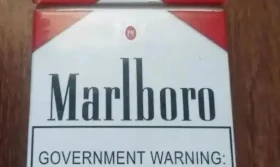The Unseen Opponent: How Secondhand Smoke Endangers the Health of Stadium Coaches
Every weekend, in stadiums and sports grounds across the world, a familiar scene unfolds. Coaches, the dedicated architects of athletic performance, stand on the sidelines, their voices cutting through the crisp air. They are strategists, motivators, and guardians of their team's potential. Their focus is singular: to guide their athletes to victory while safeguarding their well-being. They obsess over hydration, nutrition, and safe training techniques. Yet, there is a pervasive, invisible threat that many have overlooked, an opponent that doesn't play by the rules—secondhand smoke.
For decades, the conversation around stadium safety has rightly centered on the players. We have concussion protocols, strict equipment standards, and meticulously maintained playing surfaces. But what about the coaches who spend countless hours in these environments? Often positioned near spectator stands, tunnel entrances, or open office windows, they can be consistently exposed to the toxic plume of tobacco smoke from smokers in the vicinity. This isn't just a minor inconvenience; it's a significant occupational health hazard with profound consequences.
Let's pull back the curtain on what secondhand smoke actually is. It's not merely an unpleasant odor; it's a classified Group A carcinogen, a designation reserved for the most dangerous cancer-causing substances. It is a deadly cocktail of over 7,000 chemicals, hundreds of which are toxic, and about 70 that can cause cancer. For a coach, whose job demands peak cardiovascular and respiratory health, this is a direct assault on their most vital professional tools. When we talk about secondhand smoke health risks for coaches, we are talking about an increased likelihood of developing lung cancer, even if they have never touched a cigarette themselves. We are talking about a higher risk of heart disease, as the chemicals in the smoke can immediately damage blood vessels and increase the risk of heart attacks and strokes.
The impact is even more acute on the respiratory system. Imagine trying to project your voice to direct a team while your airways are inflamed and constricted. Exposure to tobacco smoke for athletic staff can lead to chronic respiratory conditions like bronchitis and pneumonia. It can trigger severe asthma attacks in those who have the condition and can even cause it in previously healthy individuals. The constant cough, the wheezing, the reduced lung capacity—these are not just personal health issues; they are professional liabilities that can diminish a coach's effectiveness and longevity in their career.

Beyond the serious diseases, the effects of passive smoking on sports coaches manifest in more immediate, performance-hindering ways. Irritated eyes, a sore throat, headaches, and dizziness are common acute symptoms. Consider the cognitive impact: studies have shown that exposure to secondhand smoke can impair cognitive function. For a coach who needs to make split-second decisions, analyze complex plays, and maintain intense focus for hours, this cognitive fog is a critical disadvantage. Their ability to process information and react quickly is dulled, potentially affecting the outcome of the game and the safety of the players under their guidance.
This problem extends beyond the professional realm into the personal. Many coaches are parents, partners, and family members. The dangers of thirdhand smoke residue in athletic facilities pose a further threat. Thirdhand smoke is the toxic residue that clings to clothing, hair, skin, and surfaces like office furniture, carpets, and car interiors long after the visible smoke has cleared. When a coach goes home, they can inadvertently carry these carcinogens with them, exposing their loved ones, especially young children who are most vulnerable to its effects. The dangers of thirdhand smoke for coaching staff transform a workplace hazard into a domestic one, creating a cycle of exposure that continues long after they have left the stadium.
So, what is the solution? How can we protect these vital members of our sporting community? The answer lies in a multi-faceted approach centered on creating completely smoke-free sports environments.
First and foremost, stadiums and sports complexes must implement and, crucially, enforce strict smoke-free policies for stadium personnel and visitors. This means designated smoking areas must be placed far away from the field, dugouts, bleachers, and any air intake vents for indoor facilities. The policy should be clearly communicated to all staff, players, and spectators. Signage should be prominent, and security should be empowered to politely enforce the rules. The goal is to create a cultural shift where a smoke-free environment is the expected and respected norm, not an optional guideline.
For coaches themselves, awareness is the first line of defense. Understanding the health effects of secondhand smoke on coaches empowers them to advocate for their own well-being. They should feel confident discussing these concerns with stadium management and athletic directors. Furthermore, practical steps can be taken. If exposure is a known issue in a specific location, such as near a frequently used exit, coaches can strategize to position themselves upwind or in a different area during breaks. Investing in high-quality air purifiers for their offices and film rooms can significantly reduce their exposure to lingering pollutants.
The conversation also needs to include support systems. Protecting coaches from secondhand smoke exposure should be part of an athletic organization's duty of care. This can involve providing resources and support for any staff members who wish to quit smoking, thereby reducing the source of the problem. Health insurance plans for coaching staff should adequately cover screenings for smoke-related illnesses, such as lung function tests and cardiovascular check-ups. Proactive health monitoring is a powerful tool in catching potential issues early.
Ultimately, this is about redefining what it means to have a safe sporting environment. The safety of the players will always be paramount, but it cannot be achieved in a vacuum. The coaches who mentor, inspire, and lead these players deserve the same level of protection. They are the steady hands that guide the ship, and their health is intrinsically linked to the success and spirit of the team. By confronting the issue of secondhand smoke head-on, we are not just preventing disease; we are honoring the commitment of these individuals and ensuring they can continue to do their best work, season after season, in an environment that allows them to thrive.
The final whistle blows on the game, but the commitment to a coach's health should never end. Let's work together to clear the air, ensuring that the only challenge a coach faces is the one from the opposing team, not an invisible and preventable opponent from the stands.












